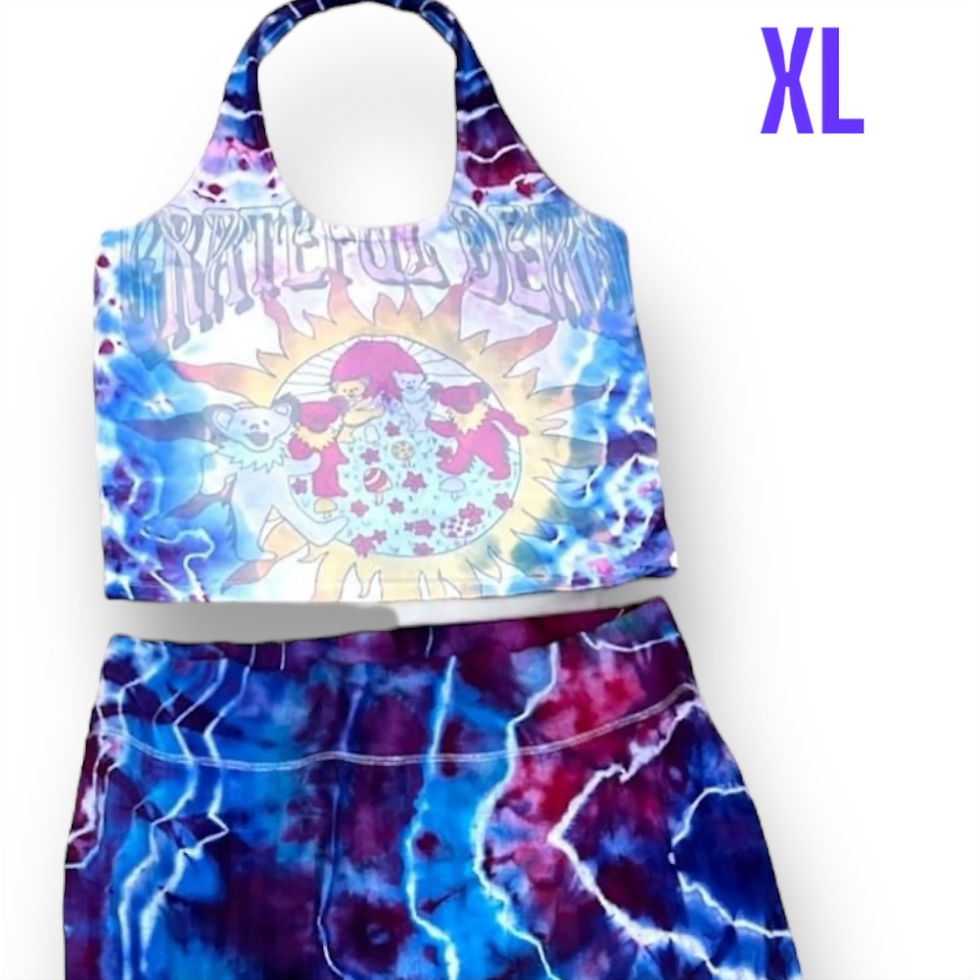Uncovering the Psychedelic Past: The influential History of Tie Dye on Haight and Ashbury with the Grateful Dead
- tangledupindyes

- Feb 17
- 4 min read
The Haight-Ashbury district in San Francisco is a vibrant symbol of the 1960s counterculture movement. This was a time when vivid colors, art, and music came together to create a new form of expression. At the center of this cultural revolution was tie dye—a craft that turned plain fabrics into colorful works of art. What many may not realize is how tie dye became linked to the legendary band, the Grateful Dead. This post explores the lively history of tie dye in Haight and Ashbury and its connection with this iconic band.
The Birth of the Tie Dye Phenomenon
Tie dye has roots that span centuries and span multiple cultures. In the United States, however, it saw a revival in the 1960s, becoming synonymous with peace and love. The Haight-Ashbury neighborhood embraced this craft wholeheartedly. By the mid-1960s, artists, musicians, and social activists adorned themselves in these bold colors and intricate patterns, using clothing as a canvas for their beliefs.
Tie dye became a way to reject conventional fashion. Young people flooded the streets of Haight-Ashbury, eager to break free from the constraints of traditional styles. For instance, clothes that showcased vibrant swirls symbolized a lifestyle of individuality and self-expression. This cultural shift not only redefined personal style but also reflected deeper social changes.
The Grateful Dead and Tie Dye
Born in the heart of Haight-Ashbury, the Grateful Dead played a crucial role in popularizing both the music and the aesthetics of the counterculture. Formed in 1965, the band quickly became a cornerstone of the San Francisco music scene. Their unique blend of rock, blues, folk, and jazz captivated audiences yearning for authenticity.
As the band's popularity soared, so did its association with tie dye fashion. The Grateful Dead often wore vibrant tie dye shirts during performances, further intertwining this style with their identity. Fans, known affectionately as "Deadheads," embraced tie dye as a badge of their loyalty to the band and the broader movement.

The blend of music and visual art during concerts created a spectacle where fans and band members alike adorned themselves in colorful garments. This immersive experience turned venues into kaleidoscopes of colors and sounds, illustrating the deep connection between the two forms of expression.
The Cultural Significance of Tie Dye
Tie dye evolved into more than just a fashion trend; it became a cultural emblem of peace, love, and community. During a time of political upheaval and social change, wearing tie dye represented a bold statement: a declaration of freedom and unity.
Beyond music, tie dye permeated various aspects of 1960s and 70s life. As the peace movement gained traction, the vibrant designs echoed a commitment to harmony. Events like the famous Woodstock festival in 1969 saw attendees showcasing tie dye, reinforcing its connection to the ideals of that era.
Tying fabric to ideology enabled tie dye to retain its relevance well beyond the 60s. In fact, surveys indicate that around 55% of people today still associate tie dye with themes of creativity and nonconformity, highlighting its enduring appeal.

Ripples Through Time: Tie Dye and Today’s Culture
The resurgence of tie dye in recent years showcases its lasting impact on contemporary fashion. Designers and brands are once again embracing psychedelic patterns, ensuring that tie dye remains fresh and relevant. Sales figures suggest that tie dye products have seen a 200% increase in popularity in the last five years alone, reflecting a growing desire for self-expression.
This revival mirrors the ongoing quest for creativity and community seen in social movements today. At music festivals and casual outings, tie dye clothing serves as a nod to its rebellious roots. For instance, major events like Coachella regularly feature attendees sporting colorful tie dye, bridging generational gaps and connecting people to that vibrant history.
The Lasting Legacy of Haight and Ashbury
The legacy of Haight and Ashbury is an essential chapter in American history. The area's lively streets still echo the melodies of the past, as the Grateful Dead's music continues to inspire a new wave of artists.
Tie dye remains a powerful symbol of rebellion, creativity, and community. Reflecting on its history reinforces the ideas and ideals that gave it life. Whether you are a devoted fan of the Grateful Dead or simply appreciate the art of tie dye, this colorful pattern holds a unique place in the narrative of freedom and self-expression.
In today’s fast-paced world, the significance of tie dye in Haight and Ashbury offers a reminder of our ongoing quest for authenticity and connection. Next time you see a swirl of vibrant colors, think of Haight and Ashbury, the Grateful Dead, and the generations of dreamers who embraced the spirit of tie dye.







Comments